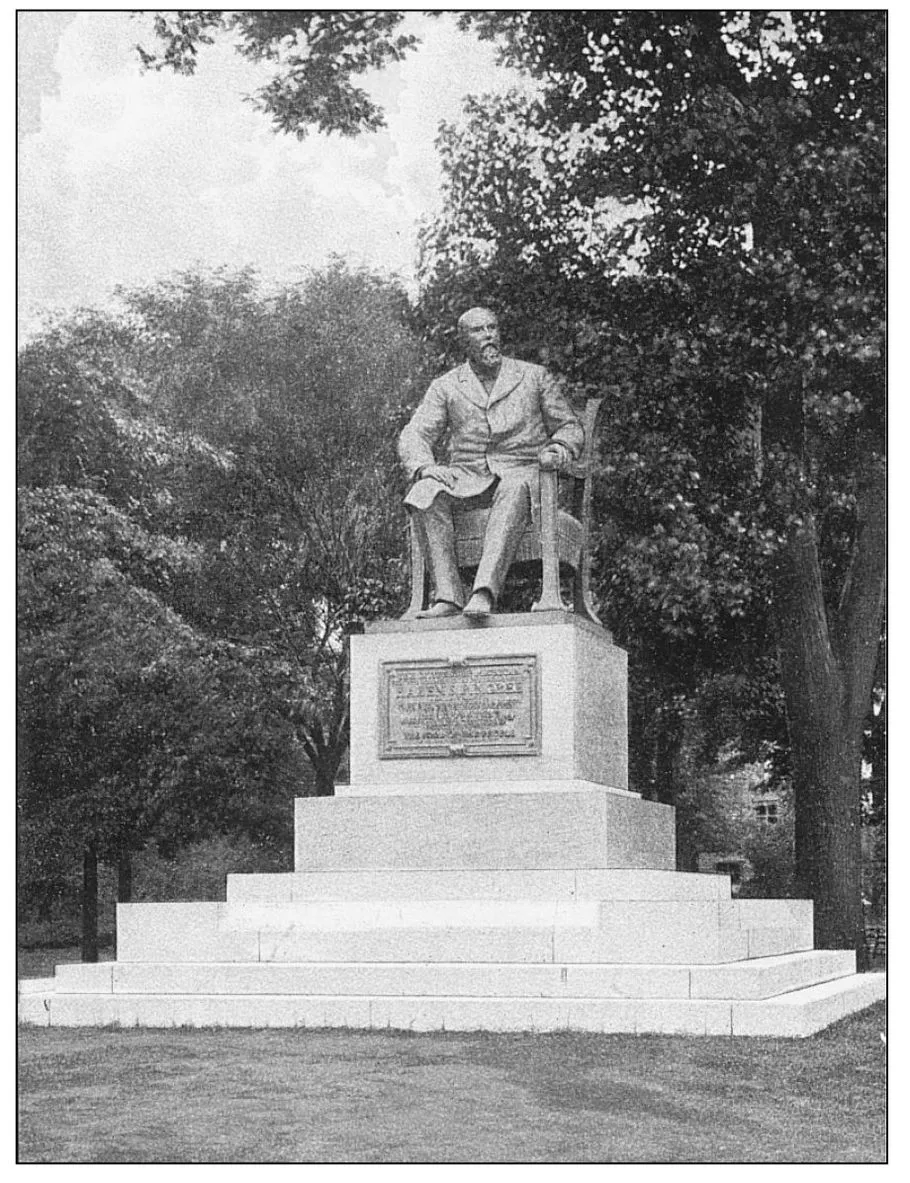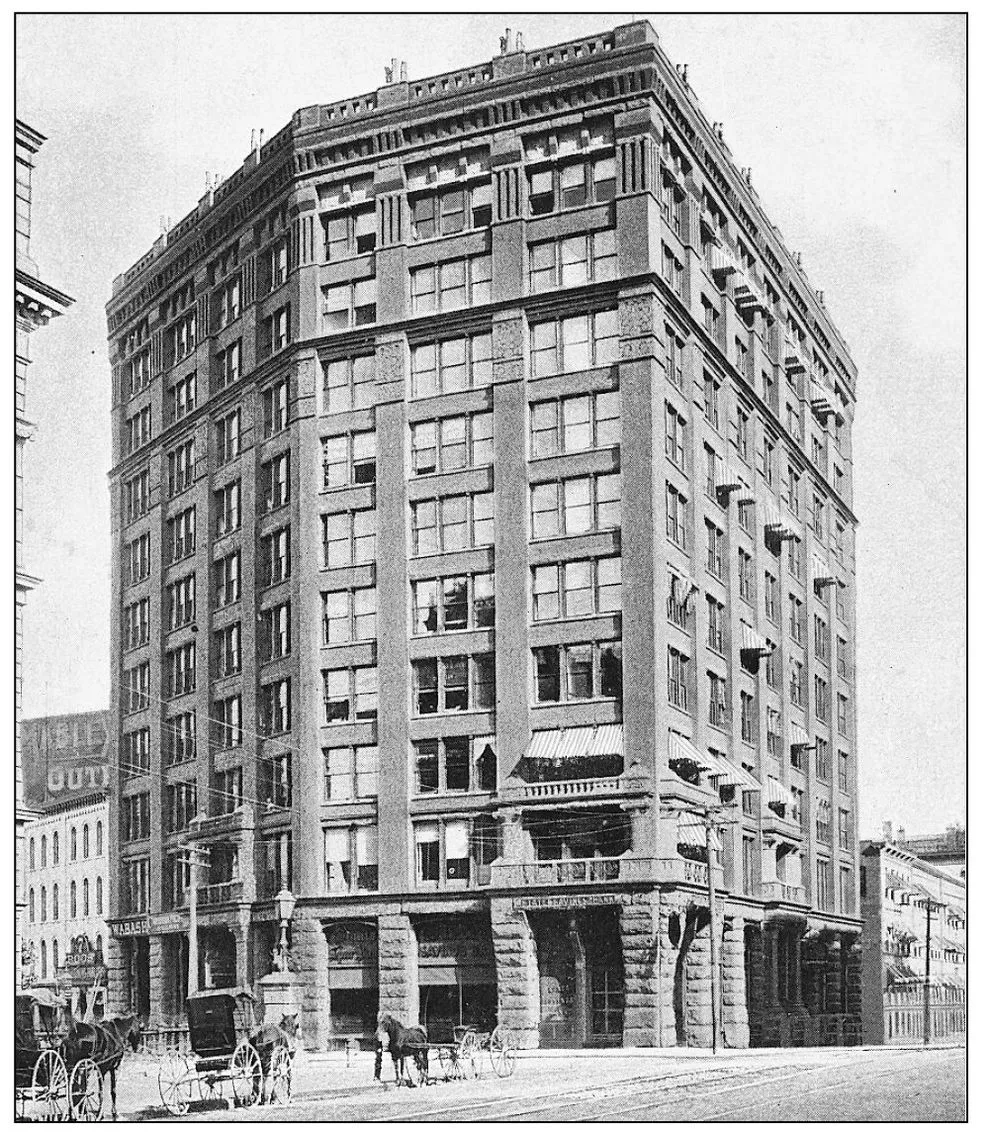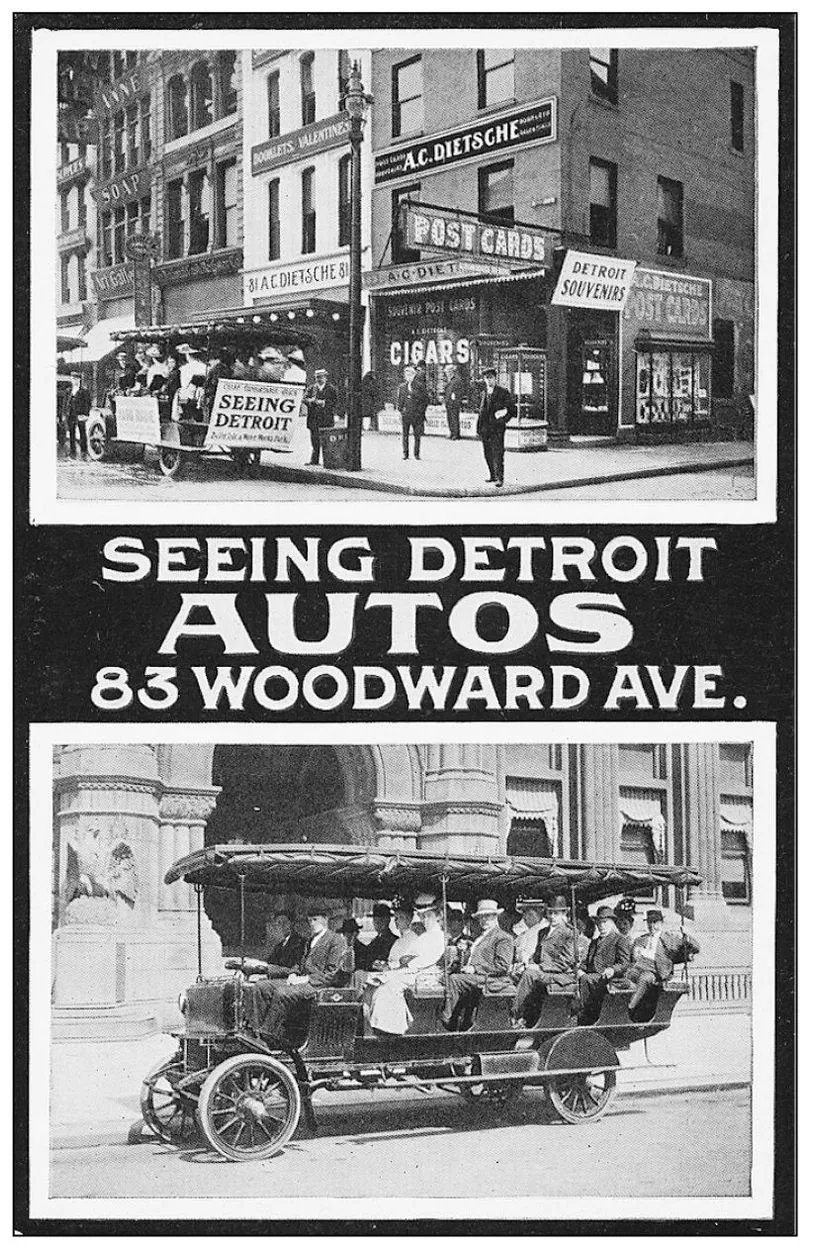
eBook - ePub
Detroit
A Postcard History
Richard Bak
This is a test
Buch teilen
- 128 Seiten
- English
- ePUB (handyfreundlich)
- Über iOS und Android verfügbar
eBook - ePub
Detroit
A Postcard History
Richard Bak
Angaben zum Buch
Buchvorschau
Inhaltsverzeichnis
Quellenangaben
Über dieses Buch
View evocative and historical images in postcards from the early days of Detroit.
Postcard photographers traveled the length and breadth of the nation snapping photographs of busy street scenes, documenting local landmarks, and assembling crowds of neighborhood children only too happy to pose for a picture. These images, printed as postcards and sold in general stores across the country, survive as telling reminders of an important era in America's history.
Häufig gestellte Fragen
Wie kann ich mein Abo kündigen?
Gehe einfach zum Kontobereich in den Einstellungen und klicke auf „Abo kündigen“ – ganz einfach. Nachdem du gekündigt hast, bleibt deine Mitgliedschaft für den verbleibenden Abozeitraum, den du bereits bezahlt hast, aktiv. Mehr Informationen hier.
(Wie) Kann ich Bücher herunterladen?
Derzeit stehen all unsere auf Mobilgeräte reagierenden ePub-Bücher zum Download über die App zur Verfügung. Die meisten unserer PDFs stehen ebenfalls zum Download bereit; wir arbeiten daran, auch die übrigen PDFs zum Download anzubieten, bei denen dies aktuell noch nicht möglich ist. Weitere Informationen hier.
Welcher Unterschied besteht bei den Preisen zwischen den Aboplänen?
Mit beiden Aboplänen erhältst du vollen Zugang zur Bibliothek und allen Funktionen von Perlego. Die einzigen Unterschiede bestehen im Preis und dem Abozeitraum: Mit dem Jahresabo sparst du auf 12 Monate gerechnet im Vergleich zum Monatsabo rund 30 %.
Was ist Perlego?
Wir sind ein Online-Abodienst für Lehrbücher, bei dem du für weniger als den Preis eines einzelnen Buches pro Monat Zugang zu einer ganzen Online-Bibliothek erhältst. Mit über 1 Million Büchern zu über 1.000 verschiedenen Themen haben wir bestimmt alles, was du brauchst! Weitere Informationen hier.
Unterstützt Perlego Text-zu-Sprache?
Achte auf das Symbol zum Vorlesen in deinem nächsten Buch, um zu sehen, ob du es dir auch anhören kannst. Bei diesem Tool wird dir Text laut vorgelesen, wobei der Text beim Vorlesen auch grafisch hervorgehoben wird. Du kannst das Vorlesen jederzeit anhalten, beschleunigen und verlangsamen. Weitere Informationen hier.
Ist Detroit als Online-PDF/ePub verfügbar?
Ja, du hast Zugang zu Detroit von Richard Bak im PDF- und/oder ePub-Format sowie zu anderen beliebten Büchern aus History & North American History. Aus unserem Katalog stehen dir über 1 Million Bücher zur Verfügung.
Information
Thema
HistoryTwo
AROUND THE TOWN

THE HUB OF DETROIT. In 1807, two years after a disastrous fire destroyed Detroit, territorial magistrate Augustus B. Woodward designed a spoked street layout for the rebuilt city. Only a portion of his grandiose vision was realized, including Campus Martius (pronounced MARSH-ess), originally a park on lower Woodward Avenue at which Woodward Avenue, Michigan Avenue, and Monroe Street presently intersect. The Latin name means “military park” and refers to the Campus Martius of ancient Rome, an area used for military drills.

WOODWARD AVENUE, C. 1904. Detroit’s main street, which begins at the Detroit River and extends northward toward Pontiac, was named for Judge Woodward. By the late 19th century the former toll road had become a grand avenue of fashionable homes and stately churches, though unimpeded commercial growth continued to push residents farther north of the city center. By the 1920s, the soot, noise, and congestion brought on by the emerging metropolis had irreversibly changed Woodward Avenue’s character.

GRAND CIRCUS PARK. Integral to Judge Woodward’s vision were regularly spaced public spaces known as “circuses,” designed to provide sylvan respites for city dwellers. Ultimately most of Woodward’s baroque plan was abandoned or scaled back. However, a remnant, Grand Circus Park at the intersection of Woodward and Adams Avenues, was set aside by the city in 1854. Its shade trees have since helped cool generations of Detroiters.

POTATO PATCH PINGREE. Grand Circus Park contains one of the city’s most familiar landmarks, the statue of former mayor Hazen Pingree. The progressive Pingree, who served from 1890 to 1896 before resigning to become governor, gained national renown for turning vacant plots of land into vegetable gardens for the needy. The statue was dedicated on Memorial Day 1904, three years after “Potato Patch Pingree” died unexpectedly in England.

A BLOOMING BOAST. One of the more eye-pleasing aspects of Grand Circus Park during the warm-weather months was watching the message, “In Detroit Life Is Worth Living,” blossom in its giant flower bed. Few disputed the boast as the city continued to grow in population and prestige through the 1920s.

CAPITOL SQUARE PARK, C. 1909. This pie-sliced piece of greenery north of State and Griswold Streets originally was the site of Michigan’s territorial capitol, which in 1863 was converted into Detroit’s first high school. A fire destroyed the building in 1893, after which the land became a park. In 1905 the body of Michigan’s first state governor, Stevens T. Mason, was laid to rest there. A statue was dedicated in 1908.

DETROIT’S FIRST SKYSCRAPER. The 11-story Hammond Building at the southeast corner of Griswold and Fort Streets was considered a “wonder of the world.” Originally conceived by George Hammond, who’d made his fortune building refrigerated railroad cars, and completed by his widow after his death, the $750,000 skyscraper was one of the largest masonry structures in the country when opened in 1890. To celebrate, a high-wire performer walked a cable from its roof to a tower of nearby city hall.

A TALL ORDER. Merchant king Christopher R. Mabley had only one order when designing his own skyscraper at Michigan and Woodward Avenues: “Never mind the expense, but be sure it’s higher than the Hammond Building.” Like Hammond, Mabley died before his dream was completed in 1896. The new owners, not wanting to waste the initial “M” placed on the capstone and hundreds of doorknobs, named the 14-story structure the Majestic Building. It was demolished in 1961, five years after the Hammond Building.

SELLING DETROIT. A.C. Dietsche, located at 83 Woodward Avenue, offered sightseeing tours, postcards, souvenirs, and practically anything else of interest to the out-of-town visitor, back in the days when Detroit was a major tourist destination.

GUIDED TOURS. Sightseeing buses gave visitors a quick, restful, and i...